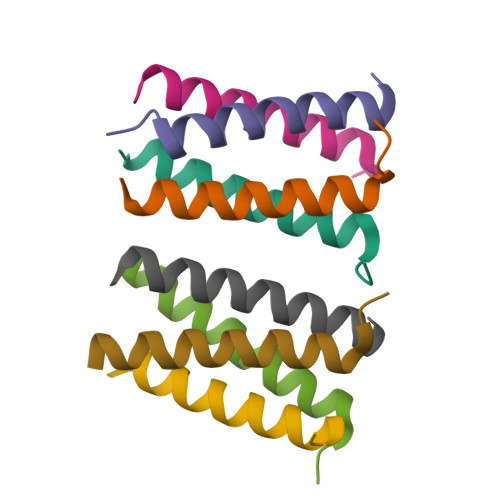Structural dissection of human metapneumovirus phosphoprotein using small angle x-ray scattering.
Renner, M., Paesen, G.C., Grison, C.M., Granier, S., Grimes, J.M., Leyrat, C.(2017) Sci Rep 7: 14865-14865
- PubMed: 29093501
- DOI: https://doi.org/10.1038/s41598-017-14448-z
- Primary Citation of Related Structures:
5OIX, 5OIY - PubMed Abstract:
The phosphoprotein (P) is the main and essential cofactor of the RNA polymerase (L) of non-segmented, negative-strand RNA viruses. P positions the viral polymerase onto its nucleoprotein-RNA template and acts as a chaperone of the nucleoprotein (N), thereby preventing nonspecific encapsidation of cellular RNAs. The phosphoprotein of human metapneumovirus (HMPV) forms homotetramers composed of a stable oligomerization domain (P core ) flanked by large intrinsically disordered regions (IDRs). Here we combined x-ray crystallography of P core with small angle x-ray scattering (SAXS)-based ensemble modeling of the full-length P protein and several of its fragments to provide a structural description of P that captures its dynamic character, and highlights the presence of varyingly stable structural elements within the IDRs. We discuss the implications of the structural properties of HMPV P for the assembly and functioning of the viral transcription/replication machinery.
Organizational Affiliation:
Division of Structural Biology, Wellcome Trust Centre for Human Genetics, Oxford University, Roosevelt Drive, Oxford, OX3 7BN, UK.

















